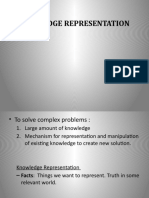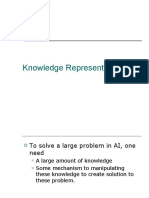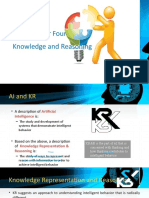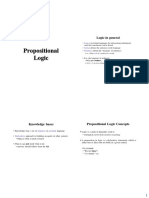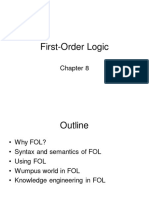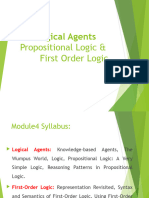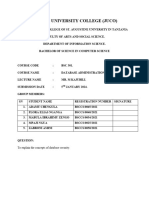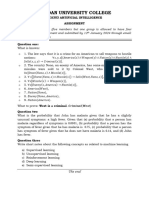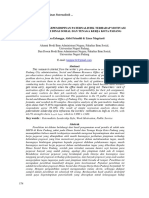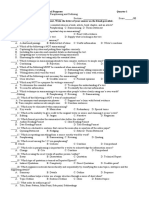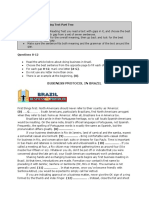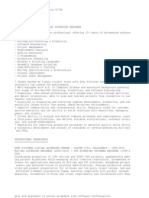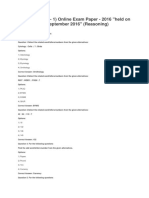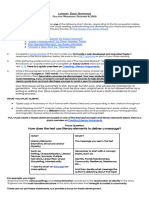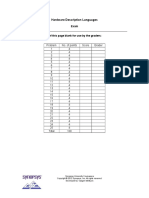0% found this document useful (0 votes)
17 views46 pagesKnowledge Represetation
The document describes the Wumpus world problem, which models a knowledge-based agent navigating a 4x4 cave with rooms connected by passageways. The agent must find gold in one room without falling into pits or being eaten by a Wumpus monster. Knowledge representation and logical inference rules help the agent reason about its environment using sensors to detect hazards and plan a path to safely retrieve the gold.
Uploaded by
Adam ChengulaCopyright
© © All Rights Reserved
We take content rights seriously. If you suspect this is your content, claim it here.
Available Formats
Download as PDF, TXT or read online on Scribd
0% found this document useful (0 votes)
17 views46 pagesKnowledge Represetation
The document describes the Wumpus world problem, which models a knowledge-based agent navigating a 4x4 cave with rooms connected by passageways. The agent must find gold in one room without falling into pits or being eaten by a Wumpus monster. Knowledge representation and logical inference rules help the agent reason about its environment using sensors to detect hazards and plan a path to safely retrieve the gold.
Uploaded by
Adam ChengulaCopyright
© © All Rights Reserved
We take content rights seriously. If you suspect this is your content, claim it here.
Available Formats
Download as PDF, TXT or read online on Scribd
/ 46











